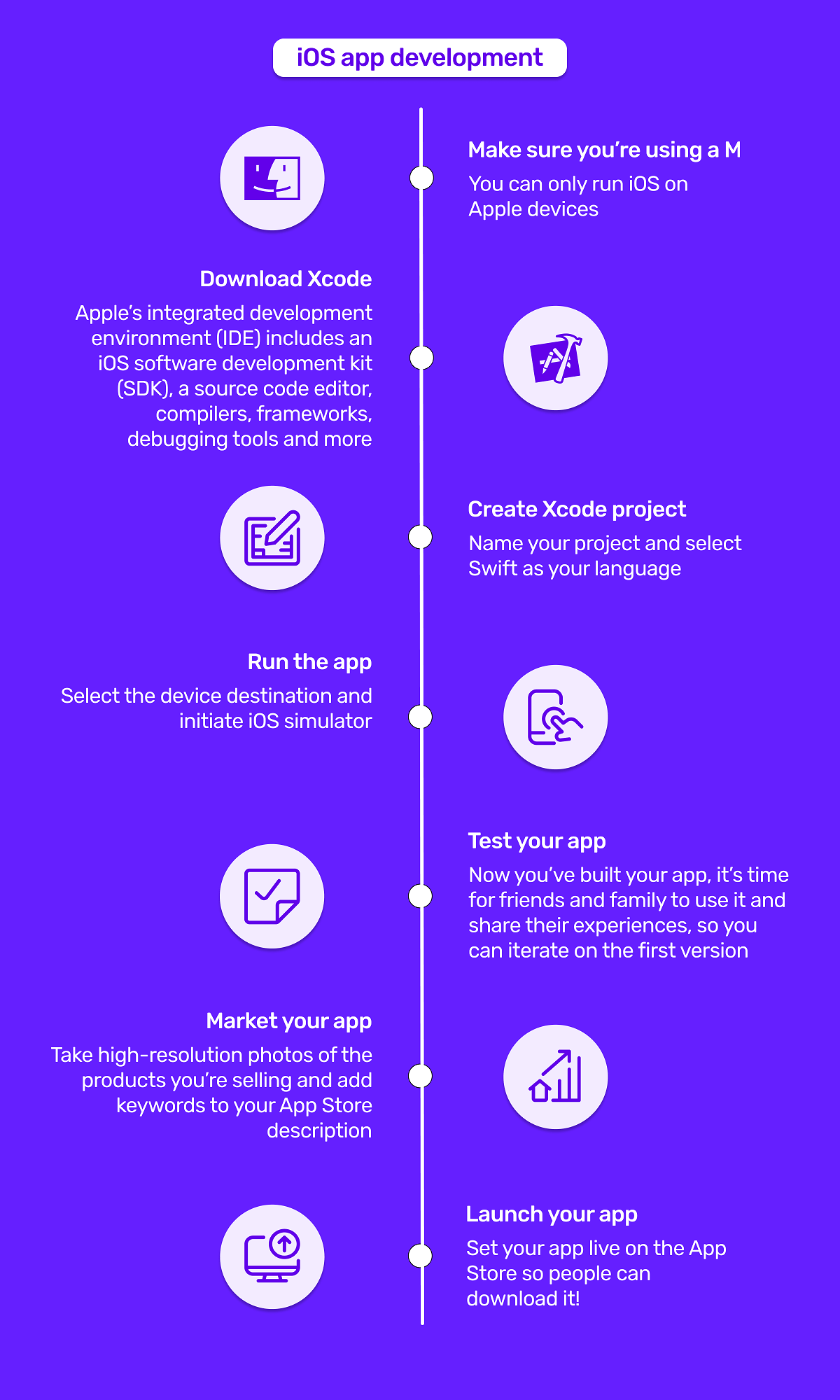What is an iOS app?
An iOS app is a mobile application developed specifically for mobile devices like iPhone and iPad. These all run on Apple's iOS mobile operating system. iOS apps take advantage of native Apple features like the touchscreen, camera, microphone, GPS and accelerometers to deliver seamless and consistent user experiences.
There is a diverse range of iOS apps, fulfilling a range of different user needs, including:
- Social networking apps
- Ecommerce platforms
- Productivity tools
- Entertainment platforms
- Educational resources
- Health and fitness trackers
- Games
How are iOS apps downloaded?
To download an iOS app, you need to visit Apple's official mobile app store, the Apple App Store. This is populated by users who submit their apps in accordance with Apple’s guidelines. Top-performing apps employ sophisticated app store optimizationstrategies, allowing them to appear at the top of the search results.

What are the main iOS programming languages?
Objective-C and Swift are the two main programming languages app developers use for iOS app development. Swift is newer than Objective-C and is the primary language, providing a user-friendly environment while operating on an open-source model. Objective-C is a legacy language and is increasingly used to maintain existing products
What are the differences between iOS and Android apps?
Although there are some similarities between iOS and Android apps, there are also key differences. Compare them below 👇
iOS | Android | |
Integrated development environment (IDE) | Xcode | Android Studio |
Programming languages | Swift, Objective-C | Java, Kotlin, C++ |
App distribution | Apple App Store | Google Play Store, Amazon |
Pay per download, in-app advertising, freemium, data monetization | Pay per download, in-app advertising, freemium, data monetization | |
User interface elements | Follows Apple’s Human Interface Guidelines (HIG) | Follows Material Design |
Fragmentation | Developed for a select few devices and screen sizes for optimal performance | Developed for a wide range of devices and screen sizes, making consistent performance challenging |
How do you create an iOS app?
When you make an iOS app, you have four main options:
- Code it yourself - in other words, create your app from scratch, using online tutorials to navigate through the process
- Use a no-code app builder - choose pre-packaged templates and themes and get simple apps live fast
- Hire a dev agency - pay a retainer to an outsourced iOS app development team and build more complex mobile apps
- Use an app platform - get the flexibility of a dev agency and the reliability of a no-code app builder
For a deep dive into each of these iOS app development routes, check out our guide on creating an app 👈
Get a free app prototype now!
Bring your software to life in under 10 mins. Zero commitments.


 Facebook
Facebook X
X LinkedIn
LinkedIn YouTube
YouTube Instagram
Instagram RSS
RSS


